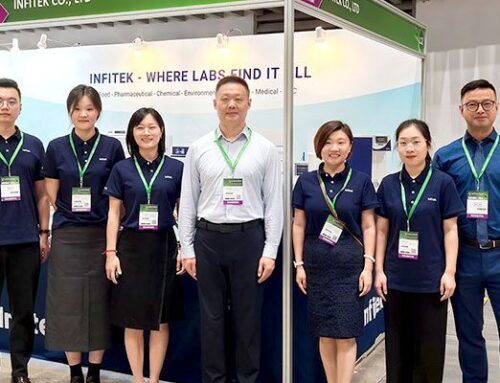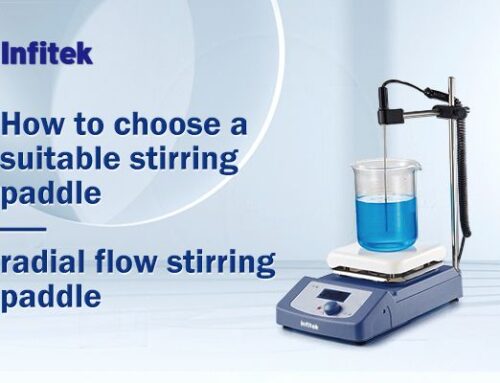From reliance on single-use plastic products to the use of high-energy-consumption equipment like -80°C freezers and fume hoods, modern clinical labs leave a surprisingly large carbon footprint. Indeed, a laboratory typically consumes between four and five times more energy per square foot than a commercial space.
This scenario can be a wake-up call for clinical labs to adopt more sustainable practices. But what can you do to make your lab more eco-friendly?
By making sustainable choices in equipment purchase and usage, clinical lab managers and staff won’t just reduce the impact of laboratory practices on the environment—they help labs save money too.
Read on for some simple initiatives that can help you make more sustainable choices when purchasing and using lab equipment.
Sustainable benchtop and large-scale lab equipment
Despite being incredibly varied across clinical laboratories, benchtop and large-scale equipment usually have a motor, a heating element, or a cooling function that substantially impacts energy consumption.
Choose lab equipment with energy efficient functions
One of the most effective ways to reduce your clinical lab’s carbon footprint is to decrease the energy consumption of equipment. New technologies and changes to manufacturing processes have upgraded equipment to reduce their energy consumption and the consequent impact on the environment.
Select the right size of equipment for your lab
When purchasing new equipment, evaluate if the product has the right size for your task. Lab equipment usually comes in different sizes, and an instrument that’s larger than necessary will lead to energy overconsumption. Thus, in addition to selecting energy efficient equipment, select size-appropriate equipment as well.
Ask suppliers questions about environmental impact
Pressure is growing for suppliers that engage in sustainable and responsible practices. With this in mind, you may want to check if your suppliers are considering the environmental impact of a product’s journey through the supply chain, from raw materials sourcing to production, packaging, storage, and delivery.
If new, energy efficient equipment isn’t affordable for your lab at this moment, there are a few other ways to cut energy use on a limited budget, including the following:
When possible and safe, turn off equipment, especially overnight and on weekends.
Use automatic functions (like standby mode) or install simple plug-in timers for equipment with regular hours of use.
Install LED light sources instead of fluorescent lights in equipment like growth cabinets and incubator shakers.
Sustainable practices for lab fridges and freezers
Ultralow temperature (ULT) freezers are sources of high energy consumption in laboratories. According to the U.S. Department of Energy, a conventional ULT freezer uses approximately 20 kW/h of energy per day, as much as an average US household.
To reduce their environmental impact, manufacturers have improved ULT freezers’ technical specifications. For instance, some energy efficient ULT freezer models like the Stirling Ultracold SU78UE use 70–75 percent less energy than older freezer types.
Moreover, newer systems have a slow warm-up time (-80°C to -50°C usually takes up to five hours). This means less energy expenditure after a rise in temperature caused by a power outage or the freezer door being left open. A slow warm-up time also ensures the integrity of stored samples.
Other tips for efficient use of your ULT freezer include the following:
Set the temperature to -70°C instead of -80°C. This can reduce energy consumption by 40 percent without compromising operations.
Keep fridges and freezers clean and organized. For example, include expiry dates on your sample labels and regularly clear out old ones.
Place your ULT freezer in a ventilated space (away from windows or heating units) and open doors for as short a time as possible to increase freezer performance, as well as sample integrity.
Schedule regular maintenance and educate lab staff to report any issues like heavy icing, broken seals, or dirty filters to the freezer manager.
Improving the energy efficiency of fume hoods
When a fume hood is in use, its door (or “sash”) needs to be open. However, if no one is ac
tively working at the fume hood, keeping the sashes closed saves energy while keeping the lab occupants safe.
In addition to educating lab staff about the importance of proper fume hood closure, ensure staff don’t use fume hoods for storage—only use fume hoods for lab work and processes. Lab staff can store materials that need ventilation in ventilated cupboards, which consume much less energy than fume hoods.
Other ways to improve the energy efficiency of fume hoods include the following:
Turn off fume hoods (after safety checks) when they are not in use for prolonged periods (e.g., holidays, weekends, etc.).
Keep the items in a fume hood at least 10 cm apart and remove unnecessary items to ensure adequate airflow.
Leading eco-friendly clinical labs
Technological advances have resulted in more sustainable clinical lab equipment, but lab staff also need to be on board with sustainability goals. By implementing simple behavioral changes and encouraging best practices, clinical leaders can help staff incorporate sustainable practices into everyday clinical lab work.
Clinical lab leaders can also be important change agents and inspire a culture of sustainability by becoming more aware of green lab strategies, such as making purchasing decisions with environmental impact in mind.
And remember that your clinical lab likely cannot change all of its practices overnight. However, small consistent changes toward sustainability can add up and make a significant impact. Even if you only start with one or two of the sustainability initiatives mentioned in this article, you’ll soon have a greener, more sustainable clinical lab.




Get Social